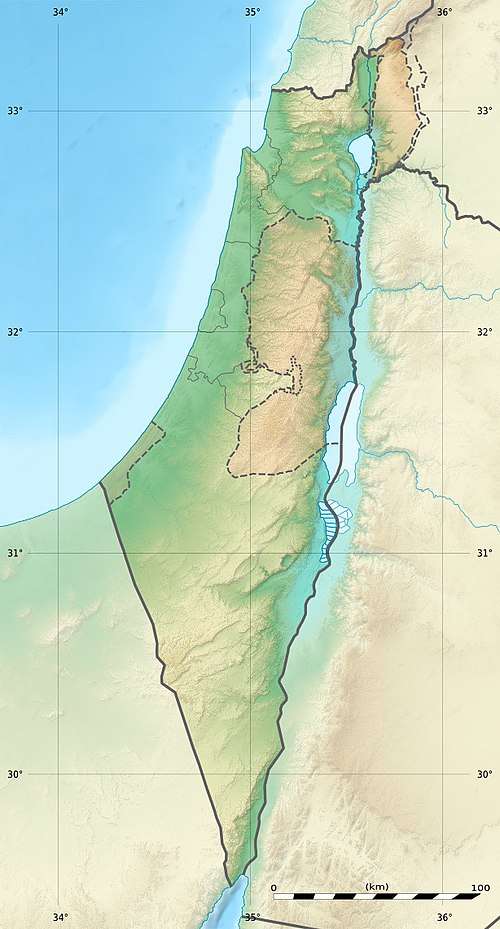Es-Skhul Cave
Es-Skhul (es-Skhūl, Arabic: السخول; meaning kid, young goat) is a prehistoric cave site situated about 20 km (12.4 mi) south of the city of Haifa, Israel, and about 3 km (1.9 mi) from the Mediterranean Sea. The site was first excavated by Dorothy Garrod during summer of 1928. The excavation revealed the first evidence of the late Epipaleolithic Natufian culture, characterized by the presence of numerous microlith stone tools, human burials and ground stone tools. Skhul also represents an area where Neanderthals – possibly present in the region from 200,000 to 45,000 years ago – may have lived alongside these humans dating to 100,000 years ago.[1] The cave also has Middle Palaeolithic layers.
.jpg) Es-Skhul Cave, Mount Carmel, Israel | |
 location in Israel | |
| Alternative name | Skhul Cave Mugharet-es-Skhul |
|---|---|
| Location | south of the city of Haifa |
| Region | Israel |
| Coordinates | 32°40′14.4″N 34°57′58.1″E |
| History | |
| Periods | Palaeolithic |
| Cultures | Natufian |
| Site notes | |
| Excavation dates | 1928 |
| Archaeologists | Dorothy Garrod |
The remains found at es-Skhul, together with those found at the Nahal Me'arot / Wadi el-Mughara Caves and Mugharet el-Zuttiyeh were classified in 1939 by Arthur Keith and Theodore D. McCown as Palaeoanthropus palestinensis, a descendant of Homo heidelbergensis.[2][3][4]
See also
- List of fossil sites (with link directory)
- List of hominina (hominid) fossils (with images)
- Nahal Me'arot Nature Reserve
- Qesem Cave
- Skhul and Qafzeh hominids
References
- Olson, S. Mapping Human History. Houghton Mifflin, New York (2003). p. 74–75.
- The Palaeolithic Origins of Human Burial, Paul Pettitt, 2013, p. 59
- Human Adaptation in the Asian Palaeolithic: Hominin Dispersal and Behaviour during the Late Quaternary, Ryan J. Rabett, 2012, p. 90
- The stone age of Mount Carmel : report of the Joint Expedition of the British School of Archaeology in Jerusalem and the American School of Prehistoric Research, 1929–1934, p. 18
External links

- Jewish Virtual Library
- Israel Ministry of Foreign Affairs